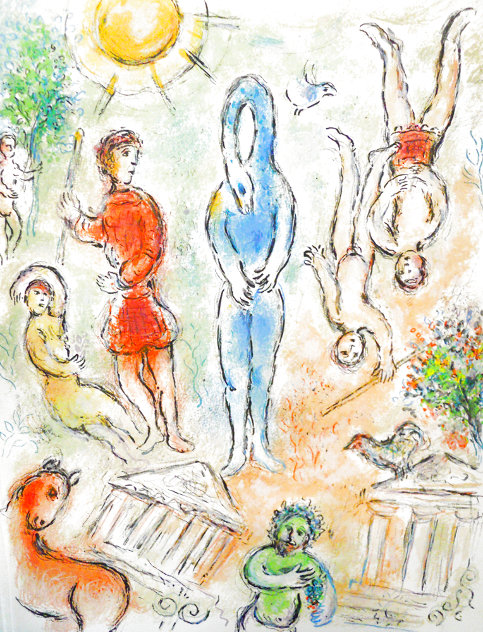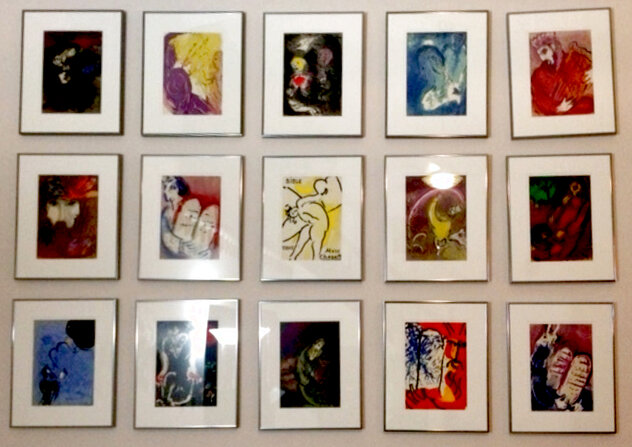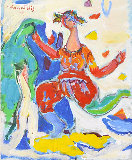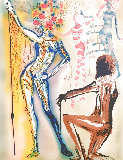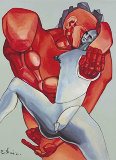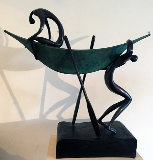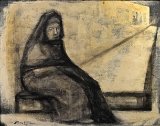







Moïse Et Le Buisson Ardent 1966
Marc Chagall
Limited Edition Print : Lithographie
Size : 24x12 in | 61x30 cm
Edition :
Year1966
Plate SignedEn Bas à Droite
Condition Excellent
Not Framed
Story / Additional Info"Moïse faisait paitre le troupeau de Jéthro... Il mena le troupeau derrière le désert, et vint à la montagne de Dieu, à Horeb." Le tableau est divisé en trois parties inégales, celle de droite, la plus large représente Moïse tombant à genoux. La deuxième représente le buisson ardent et l'ange de Dieu dans un cercle de lumière.La troisième montre Moïse entraînant après lui comme dans un manteau le peuple sauvé de la fureur de Pharaon par le miracle de la mer qui se referme sur les chars et les guerriers.
Certificate of AuthenticityPlazzart
LID137279
Marc Chagall - Russian Federation
Art Brokerage: Park West: Marc Chagall French-Russian Artist: Marc Chagall was a French-Russian artist whose work anticipated the dream-like imagery of Surrealism. Over the course of his career Chagall developed the poetic, amorphous, and deeply personal visual language evident in the painting I and the Village (1911). "When I am finishing a picture, I hold some God-made object up to it—a rock, a flower, the branch of a tree or my hand as a final test," he said. "If the painting stands up beside a thing man cannot make, the painting is authentic. If there's a clash between the two, it's bad art." Born Moishe Shagal on July 7, 1887 in Vitebsk, Russia (present-day Belarus) to a Hasidic Jewish family, the artist was raised immersed in Jewish culture and iconography. Studying under the artist Yehuda Pen as a youth, the Judaic traditions and folklore of his hometown permeated Chagall's paintings. After studying in St. Petersburg, the artist moved to Paris in 1910, where he quickly befriended members of the French avant-garde, including Robert Delaunay and Fernand Léger. Visiting Russia in 1914, the artist was prevented from returning to Paris due to the outbreak of World War I until 1926. In addition to his paintings, Chagall was also noted for his vibrant works in stained glass and lithography. Forced to flee Paris during World War II, Chagall lived in the United States and traveled through to Israel before returning to France in 1948. The artist died in Saint-Paul-de-Vence, France on March 28, 1985. Today, his works are held in the collections of The Museum of Modern Art in New York, the Tate Gallery in London, the Tel Aviv Museum of Art, and the Albertina in Vienna, among others. Listings wanted.

